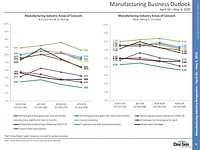How COVID, the Supply Chain and ESG are Impacting M&A Activity

Leland Harrs, Managing Director, Head of Chemicals, at Houlihan Lokey, offers a brief update on the current M&A market. Houlihan Lokey is a leading global investment bank in New York with expertise in mergers and acquisitions, capital markets, financial restructuring, and valuation.
PCI: How would you characterize the impact of COVID on the global coatings M&A market?
Harrs: As with many sectors, the initial reaction among coatings manufacturers and suppliers was a deep concern that there could be a repeat of the Great Recession of 2007-8. There were fears that customer demand and financial market liquidity would dry up.
Some large companies actually instituted temporary pay cuts in the early days of COVID, reversing them a few months later.
The actual experience varied by segment, including architectural/decorative, industrial, aerospace and automotive. Aerospace experienced a sharp decline, which is now beginning to turn around. Automotive experience a “V-shaped” recovery. Perhaps most surprisingly, the architectural/decorative segment experienced an uplift that continues to this day. As more people work from home offices, the demand for paint has exploded.
In retrospect, some of the proactive cost-cutting measures resulted in a “supercharging” of financial results when business rebounded. I think the major corporates are positioned even more strongly than before the pandemic.
PCI: Do you expect supply chain disruptions to derail the recovery and impact M&A?
Harrs: I cannot recall in my over 25 years as a chemicals banker a time when the supply chain was as stretched as it is now. Shortages persist across the raw material spectrum, from resins to pigments and additives. Some disruptions have been weather-related and caused shocks upstream to petrochemical manufacturers and their downstream customers. Other one-off incidents, like the Suez Canal blockage, impacted global shipping, and the ripple effects can be felt to this day. Industry executives don’t expect the supply chain to return to normal until 2022 at the earliest. Other shortages include labor and trucking. The immediate impact is inflationary pressure on pricing. Raw material suppliers are not having problems achieving price increases. Coatings producers are eager to get their hands on raw materials and will pay a premium to secure supply. Inventory levels are at historically — and uncomfortably — low levels for most paint manufacturers.
Despite these pressures, most producers are enjoying strong results. In many cases, results are only limited by the inability to get raw materials to convert into finished goods.
The impact on M&A has been limited. Corporates and financial sponsors alike remain flush with cash and are eager to grow via acquisitions. Strong liquidity and excess demand for assets has bid up company valuations to historical highs.
PCI: The topic of ESG (Environmental, Social and Governance) appears to be an increasingly important area for companies and investors. How are companies handling this issue and what are the costs/benefits?
Harrs: The pace at which ESG initiatives have taken hold among corporates is remarkable. I believe the ESG movement has now firmly taken hold and there is no looking back. Only a few years ago, the uptake was more limited. Today, all stakeholders — including investors, lenders, customers and suppliers — are demanding action. Most companies now include ESG as part of a mission statement on their web sites and annual reports. Organizations have sprung up that provide third-party evaluations and “scorecards” of a company’s efforts on ESG. While the situation is rapidly evolving, and there is no one approved playbook, the ESG movement is clearly here to stay. In time, as with accounting, I expect that “generally accepted” rules will evolve that guide and inform companies’ efforts around ESG. Already, there is a push for setting tangible, measurable results around carbon neutrality, recycling, renewability, as well as social impacts and governance policies.
As it relates to M&A, the ESG topic is of front-and-center importance in all new processes. It is a mandatory topic for diligence by buyers, and the success with which a company has prepared and proactively addressed the topic will impact the success of the process and the company’s valuation.
Looking for a reprint of this article?
From high-res PDFs to custom plaques, order your copy today!







